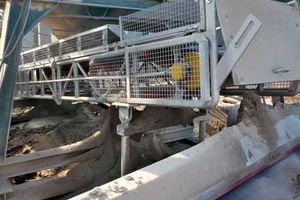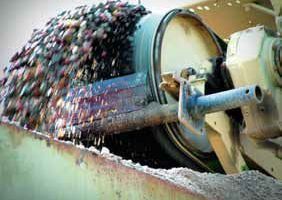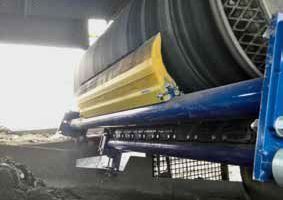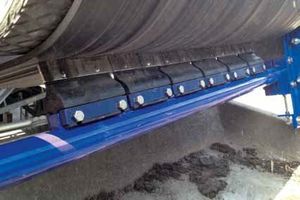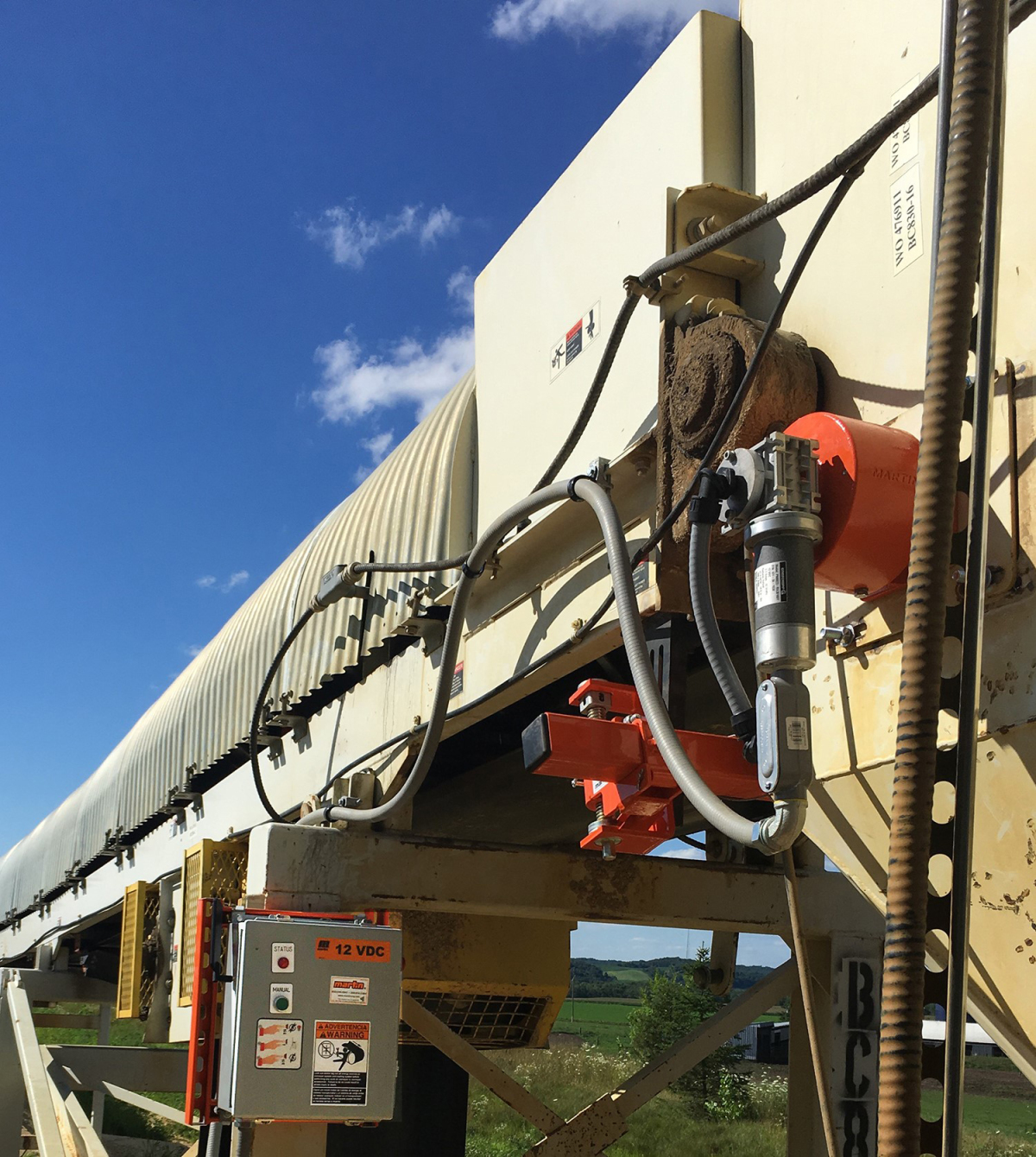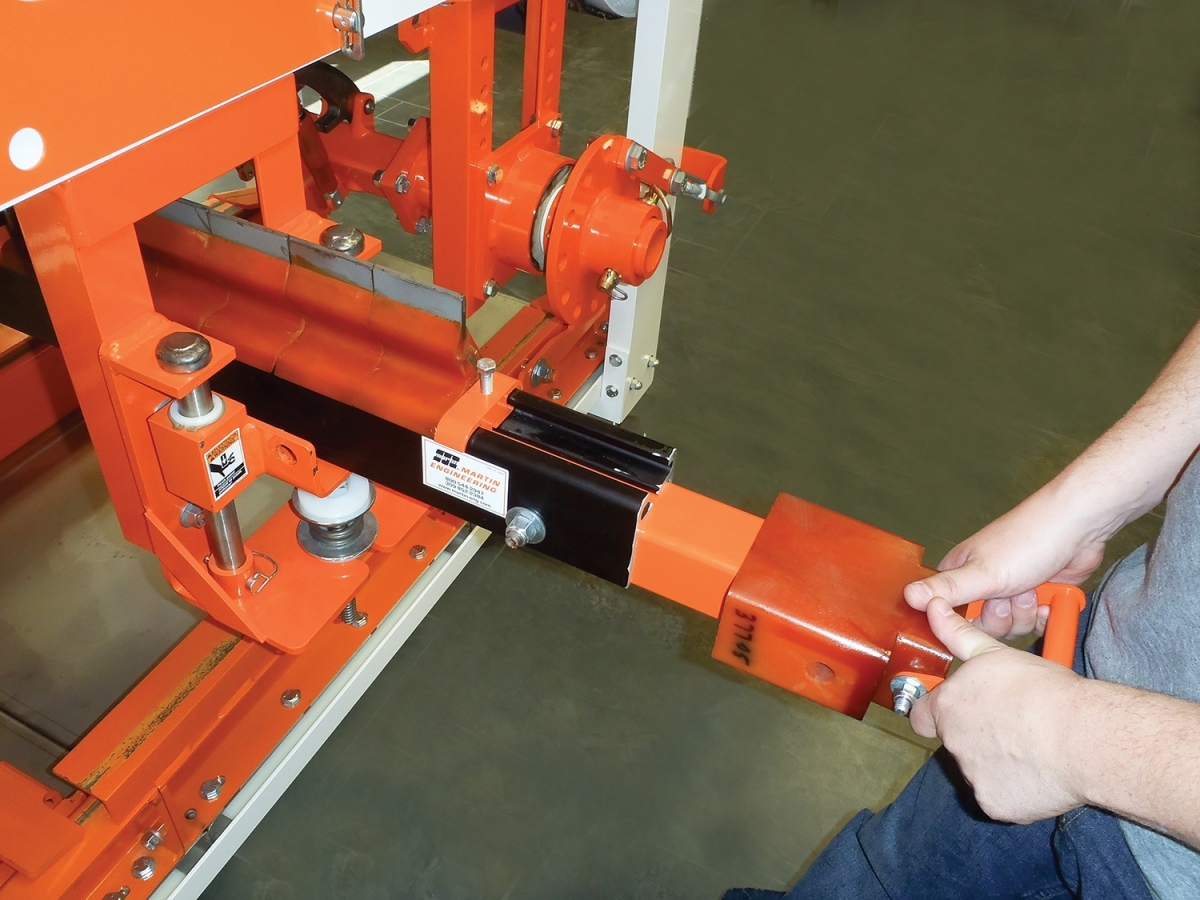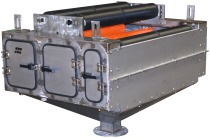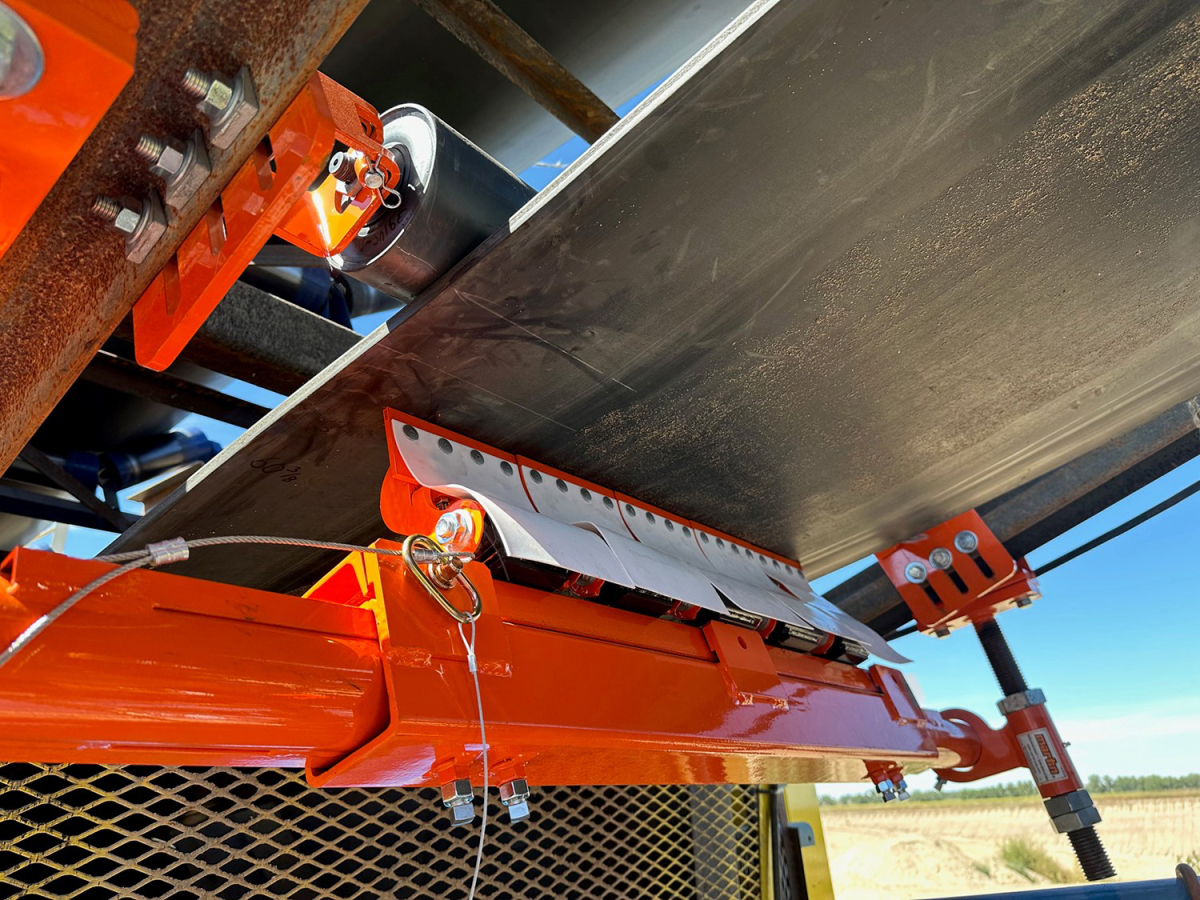Profit instead of carryback
Bulk material imposes particularly high demands on belt conveyor systems. The conveyed materials are often heavy, sharp-pointed or sharp-edged and produce dirt and dust. Conveyor systems installed in the open are also exposed to weather conditions such as temperature fluctuations, moisture and direct sunlight. In spite of these conditions, system availability has to be assured at all times because stoppages result in immense costs (Fig. 1). Maintenance and cleaning of the equipment at regular intervals is therefore essential for trouble-free operation.
In addition to these factors, one of the greatest challenges for the operator of belt conveyor systems for bulk materials is carryback – conveyed material that does not leave the belt at the transfer point but remains caked onto the bottom strand of the belt, the so-called return side, until it eventually falls off. The amount of material involved is not inconsiderable: a study produced by the Conveyor Equipment Manufacturers’ Association (CEMA) stated that on a 1.5-metre-wide belt conveyor operating with a belt speed of 250 m per minute around three tonnes of carryback occur – per week. That works out at 150 t of lost material per year on just one single belt conveyor. The resultant total material wastage of a plant therefore represents a substantial financial loss.
However carryback is also a problem for other reasons. The additional weight of the material adhering to the belt, as well as the increased generation of dust and dirt, have a negative effect on the functioning of the belt conveyor system, and sharp-pointed or sharp-edged materials can also cause wear and damage to the system. The results are higher maintenance and spare parts costs, as well as increased downtime. Furthermore, bulk material falling from the return side of a belt conveyor is a significant safety hazard for the personnel. And last, but not least, the material that has fallen onto the ground results in extra cleaning work, and that also means additional costs.
Naturally, owners of belt conveyor systems therefore do their best to minimize the amount of carryback. And very often, belt cleaners (Figs. 2, 3) from Flexco are installed as one solution for this problem. Flexco, located at Rosenfeld/Württemberg and with its parent company in the USA, specializes in components and accessories for conveying systems. Belt cleaners are mounted at the material discharge end of a belt conveyor and remove the adhering material at that point. They consist of plastic or carbide-metal blades (Fig. 4), as well as a spring tensioning system that ensures optimum contact between the blades and the conveyor belt. Often, a system of different cleaners is used: a pre-cleaner for removing coarse material and one or more secondary cleaners for fine cleaning. Thisincreases the effect of the belt cleaners, enabling them in many cases to remove more than 90% of the carryback.
However, to ensure that the belt cleaners always work at their full efficiency, they have to be regularity maintained and cleaned. There are very good reasons for this: regular maintenance not only increases the performance but also raises the service life. This applies not only to the belt cleaners themselves, but to the entire belt conveyor system, because a clean and well-maintained belt cleaner minimizes the wear at other plant components, such as the conveyor belt itself, the idlers and the connections. And that pays off.
When maintaining the belt cleaners, the operator should follow a fixed procedure, which - in simple terms - can be expressed as: cleaning, inspection, tensioning. Hence, the first task is cleaning of the blade and the tension springs, because these components can only function properly if they are free of caked-on material. A dirt-clogged tension spring, for instance, may not be able to build up the necessary force for properly holding the blade against the conveyor belt. Also, it is far easier to inspect a belt cleaner that has been freed of dirt.
The visual inspection is the second step in the maintenance procedure. It is a quick and easy way of detecting whether the belt cleaner functions properly. Furthermore, the employee that carries out the visual inspection is able to identify and change any damaged components. Particular attention should be paid to blade wear. The following should be regularly checked and documented: how far has blade wear progressed in specific time periods and when will it probably be necessary to change the blade. This facilitates planning of the required maintenance intervals and prevents complications such as late ordering of spare parts.
The third step is checking and, if necessary, correcting the tension of the spring tensioning system. If the tension gets too low, the blade is not held tightly enough on the conveyor belt and therefore removes less carryback material. However, if the tension is excessive, wear of both the blade and the belt will be increased, reducing the service life of the entire belt conveyor system. As regular inspection of the tension springs is crucial for trouble-free conveyor operation, it is very important for these components to be easily accessible. Conveyor belt cleaners from Flexco are therefore specifically designed to allow quick and easy maintenance of both the blade and the tensioning system.
Maintenance and servicing of a belt conveyor system in general and of the belt cleaners in particular should be carefully planned and organized. In addition to the actual servicing, other factors also play a significant role; for instance the selection of appropriate components and spare parts. It pays to purchase products of proven quality, because the cost of high-quality parts is quickly recouped due to their better performance, longer service life and lower maintenance requirement.
The blade of a belt cleaner is one part that needs to have a particularly long service life. The quality of the employed plastic or metal is of decisive importance in this respect. It is also important for the material of the blade to be appropriately matched to the respective application. The Flexco range of blades allows clients to choose between polyurethane plastic that is economical and kind to the belt, and heavy-duty and wear-resistant carbide material. Belt cleaners made of polyurethane are also available in different mixtures, for instance for special resistance to heat or aggressive chemicals.
Another aspect that influences blade wear is the distribution of material being conveyed on the belt. It is very rare for the conveyed material to be spread over the entire width of the belt. It is correspondingly inefficient and irrational for a belt cleaner to be in contact with parts of the belt that are not transporting material. However, if the installed blade cleans precisely that part of the belt that is carrying material, it increases the cleaning performance and prevents non-uniform and unnecessary wear. Taking a longer-term view, it is therefore sensible to invest in a solution that is customized to specifically suit the belt conveyor.
Many individual components interact in a belt conveyor system to enable the achievement of the system’s economic purpose: to safely and efficiently transport the required material from A to B. In this complex system, the conveyor belt cleaners are a small but important component part. They minimize carryback and thus improve the performance, efficiency and service life of the entire system. This tough job can only be reliably performed over long periods of time by high-quality components – and only then if they are regularly maintained and serviced.

